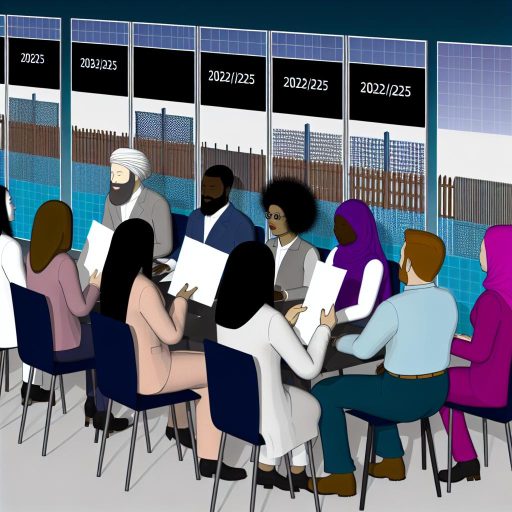Introduction
Construction management practices have evolved over centuries.
Understanding this evolution is crucial for industry professionals.
Early Construction Management Practices
During the early stages of construction projects, traditional methods were commonly used.
These methods were based on experience and passed down from generation to generation.
- Lack of formal management practices: In the past, there was a lack of structured processes and procedures in construction projects.
- Role of master builders and craftsmen: Master builders played a crucial role in overseeing the construction process and ensuring that the project was completed successfully.
Master builders were skilled individuals who had expertise in various construction techniques.
They were responsible for coordinating different aspects of the project, from design to execution.
Craftsmen, on the other hand, were skilled workers who specialized in specific trades, such as masonry, carpentry, or plumbing.
Without formal management practices in place, decision-making was often based on the experience and intuition of master builders.
They were required to possess a deep understanding of various construction techniques and materials in order to ensure the success of the project.
Communication among team members was crucial during this time, as there were no standardized processes in place.
Master builders had to rely on verbal instructions and drawings to convey their vision to craftsmen and other workers involved in the project.
Challenges Faced
Despite the expertise of master builders and craftsmen, construction projects faced several challenges due to the lack of formal management practices.
These challenges included:
- Limited planning and coordination: Without a formal management process, planning and coordination of resources were often inefficient and led to delays in project completion.
- Quality control issues: In the absence of standardized quality control measures, there was a risk of defects and errors in construction, affecting the overall quality of the project.
- Cost overruns: Without proper cost estimation and control mechanisms, construction projects often exceeded their budget, leading to financial losses for stakeholders.
These challenges highlighted the need for formalized management practices in construction projects to ensure efficiency, quality, and cost-effectiveness in project delivery.
During the Industrial Revolution, construction management practices underwent significant changes.
These changes had a lasting impact on the industry.
Introduction of mass production techniques
- The Industrial Revolution introduced new technologies and machinery that revolutionized construction project completion.
- Mass production techniques, like steam-powered machinery and assembly lines, allowed quicker and more efficient construction processes.
- This caused a major increase in speed and scale of construction projects.
Emergence of project management principles
- The introduction of mass production techniques created a need for organized and coordinated project management.
- Project managers became central figures overseeing projects to ensure work finished on time and within budget.
- This shifted construction management towards specialized roles focused on planning and execution.
Development of structured project management approaches
- Project management principles evolved to favor more organized and structured approaches.
- Tools such as Gantt charts, critical path method, and earned value management improved planning and control.
- This foundation led to modern construction management that prioritizes efficiency and quality.
The Industrial Revolution played a crucial role in the evolution of construction management practices.
Mass production, project management principles, and structured approaches marked key milestones in the industry.
Explore Further: Understanding Bulldozer Operations and Uses
Development of Formal Construction Management Practices
- Establishment of the Construction Management Association of America (CMAA) in 1982.
- Adoption of standardized project management processes.
- Introduction of software tools for project scheduling and budgeting.
During the late 20th century, the field of construction management saw significant advancements.
Transform Your Career Today
Unlock a personalized career strategy that drives real results. Get tailored advice and a roadmap designed just for you.
Start NowThe formalization of practices and the establishment of key organizations like CMAA occurred in 1982.
The Construction Management Association of America played a pivotal role in setting industry standards.
It promoted education and provided a platform for professionals to network and share best practices.
One notable aspect was the adoption of standardized project management processes.
This move helped streamline operations, improve efficiency, and enhanced overall project outcomes.
The introduction of software tools for scheduling and budgeting caused a seismic shift in practices.
These tools revolutionized how projects were planned, executed, and monitored.
Software solutions like Primavera, Procore, and Microsoft Project became indispensable for managers.
They offered real-time insights, facilitated collaboration, and enabled better decision-making.
Project teams could create detailed schedules and allocate resources more effectively.
They tracked progress and managed costs with greater precision and accuracy.
These tools allowed seamless communication among stakeholders.
The technologies reduced delays, minimized risks, and ensured successful delivery within constraints.
The evolution of practices marked a paradigm shift toward a more systematic and data-driven approach.
Decisions increasingly relied on empirical evidence and analytics.
As the construction industry became more complex and competitive, managers adapted continuously.
They embraced technological innovations and stayed abreast of latest trends and developments.
Continuous learning and professional development became essential to remain relevant.
Maintaining a competitive edge required dedication to growth in construction management skills.
The development of formal practices, driven by organizations like CMAA, transformed project management.
Transform Your Career Today
Unlock a personalized career strategy that drives real results. Get tailored advice and a roadmap designed just for you.
Start NowThe adoption of standards and software tools changed how projects are planned, executed, and managed.
Discover More: Top Benefits of Working in Manufacturing
Integration of Technology in Construction Management
- Use of Building Information Modeling (BIM) for project visualization and coordination
- Implementation of drone technology for aerial surveys and inspections
- Advancements in construction management software for real-time project tracking and communication
Building Information Modeling (BIM)
Building Information Modeling (BIM) has revolutionized the way construction projects are planned.
This technology allows the creation of digital representations of a building’s physical and functional characteristics.
Stakeholders can visualize the project in a simulated environment before construction begins.
BIM enables better coordination among all parties involved in the project.
As a result, this leads to improved collaboration and greater efficiency.
Drone Technology
The use of drones in construction has become increasingly popular.
These devices provide aerial surveys and inspections efficiently and cost-effectively.
Drones capture high-resolution images and videos essential for assessing site conditions.
They also help track project developments and ensure compliance with safety regulations.
Drone technology enhances safety, accuracy, and productivity in construction management.
Advancements in Construction Management Software
Recent software developments have transformed how construction projects are managed.
Managers can track projects and communicate in real-time with advanced tools.
These tools streamline workflows and optimize resource allocation effectively.
They also improve decision-making processes significantly.
The software boosts coordination among team members, subcontractors, and suppliers.
This results in increased productivity and profitability.
The integration of technology in construction management greatly enhances project delivery efficiency.
You Might Also Like: Tips for Balancing Work and Life as an Assembler
Transform Your Career Today
Unlock a personalized career strategy that drives real results. Get tailored advice and a roadmap designed just for you.
Start Now
Sustainable construction management focuses on green building certifications and sustainable materials.
These certifications and materials promote environmentally responsible construction practices.
- Focus on green building certifications and sustainable construction materials.
- Integration of sustainability principles in project planning and execution.
- Importance of environmental impact assessments in construction projects.
Green Building Certifications and Sustainable Materials
One key aspect of sustainable construction management is using green building certifications and sustainable materials.
Green building certifications, such as LEED, ensure projects are designed and built with sustainability in mind.
These certifications provide guidelines for energy efficiency, water conservation, waste reduction, and indoor air quality.
In addition to certifications, using sustainable construction materials is crucial.
Sustainable materials include recycled, reclaimed, and renewable resources with minimal environmental impact.
Incorporating these materials helps builders reduce their carbon footprint and support a healthier environment.
Integration of Sustainability Principles in Project Planning
Another vital element is integrating sustainability principles throughout project planning and execution.
This involves considering environmental, social, and economic factors during decision-making in construction.
Project plans should include strategies to minimize energy use, reduce waste, and promote renewable resources.
By doing so, managers can optimize resource efficiency, lower costs, and lessen environmental harm.
Environmental Impact Assessments for Responsible Construction
Environmental impact assessments ensure construction projects are environmentally responsible.
These assessments evaluate potential environmental effects before construction begins.
They help identify and reduce adverse impacts on ecosystems and communities.
Conducting these assessments enables managers to understand risks and implement harm reduction measures.
This proactive approach protects natural resources and the well-being of affected communities.
Advancing Sustainable Practices for Future Resilience
Sustainable construction management promotes environmental stewardship and resource efficiency.
Focusing on certifications, sustainable materials, and integrating sustainability supports project success.
Environmental impact assessments further enhance responsible project delivery.
Transform Your Career Today
Unlock a personalized career strategy that drives real results. Get tailored advice and a roadmap designed just for you.
Start NowThese practices contribute to a sustainable and resilient built environment for future generations.
Learn More: How to Become a Certified Mason in the USA
As the construction industry continues to evolve, current trends in construction management practices shape the way projects are planned.
These trends influence how projects are executed.
They also affect project completion methods.
Emphasis on risk management and safety protocols
- Construction projects are inherently risky, so robust risk management strategies mitigate potential hazards.
- Implementing strict safety protocols ensures worker well-being and helps avoid costly delays and accidents.
Integration of Lean construction principles for improved efficiency
- Lean construction principles focus on maximizing value and minimizing waste, streamlining processes.
- By implementing Lean practices, managers optimize resources, reduce costs, and enhance overall project performance.
Project outcomes improved through collaborative delivery methods
- Design-Build and Integrated Project Delivery (IPD) involve close coordination among all project stakeholders from early stages.
- These methods promote teamwork, transparency, and communication for better outcomes and stakeholder satisfaction.
Staying updated with current trends in construction management is essential for professionals to adapt effectively.
Emphasizing risk management and safety improves project reliability.
Integrating Lean principles streamlines resource use and cuts costs.
Adopting collaborative delivery methods fosters better teamwork and project success.
Advancements Shaping Construction Management Practices
The evolution of construction management practices has been shaped by advancements in technology.
Project delivery methods have also changed significantly during this time.
Sustainability has become increasingly important in the construction industry.
Professionals in construction must stay updated with current trends to remain competitive.
They need to deliver projects efficiently to meet client and market demands.
The future will see continued adoption of new technologies such as Building Information Modeling (BIM).
Prefabrication methods will also play a larger role in construction processes.
Sustainable construction techniques will become more widespread and critical for success.




